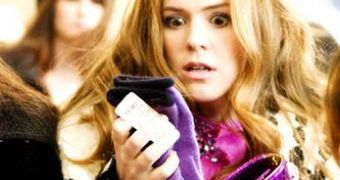In our computerized era you would think that e-commerce is killing the traditional commerce and online shopping will be the only way for people to buy, but Caltech researchers say otherwise.
They measured how much the way that something was presented influenced the consumer to pay for it, and they started by presenting foods to hungry subjects, in three different forms: text, image and in a tray in front of them.
There was no difference between the text and the image presentation but the bids on the food in front of the subjects were 50 percent higher than for either of the other two presentations.
Caltech graduate student Benjamin Bushong says: “we were quite surprised to find that the text display and the image display led to similar bids.
“Initially, we thought people would bid more in the face of more information or seemingly emotional content.
“This finding could explain why we don't see more pictorial menus in restaurants—they simply aren't worth the cost!”
Antonio Rangel, professor of neuroscience and economics at Caltech, said that because the smell of the food might have influenced the test subjects, they tried the same thing but with trinkets from the Caltech bookstore this time.
The results were the same, the subjects being willing to pay 50 percent more for the objects they could reach out and touch.
For explaining this the researchers turned to the classic experiment of Pavlov, that says that the behavior is driven by a typical Pavlovian response.
Rangel explains that behavioral neuroscience suggests that when I put something appetizing in front of you, your brain activates motor programs that lead to your making contact with that item and consuming it.
“We hypothesized that if there's no way for you to touch the item, then the Pavlovian motor response would be absent, and your drive to consume the item thus significantly lessened.”
They tested this theory by putting a plexiglass barrier between the subjects and the items they were bidding for and noted that the value that the subjects gave that specific item dropped to the same level as the text- ad the picture-based items.
The results of these tests only mean that even if retail stores suffer a bit because of the online commerce, they will never go out of business.
Besides Rangel and Bushong, the coauthors on American Economic Review paper, “Pavlovian Processes in Consumer Choice: The Physical Presence of a Good Increases Willingness-to-pay,” are former Caltech undergraduate student Lindsay King and Colin Camerer, the Robert Kirby Professor of Behavioral Economics.
The work was supported by the Gordon and Betty Moore Foundation, and it was published in the September issue of the American Economic Review.

 14 DAY TRIAL //
14 DAY TRIAL //